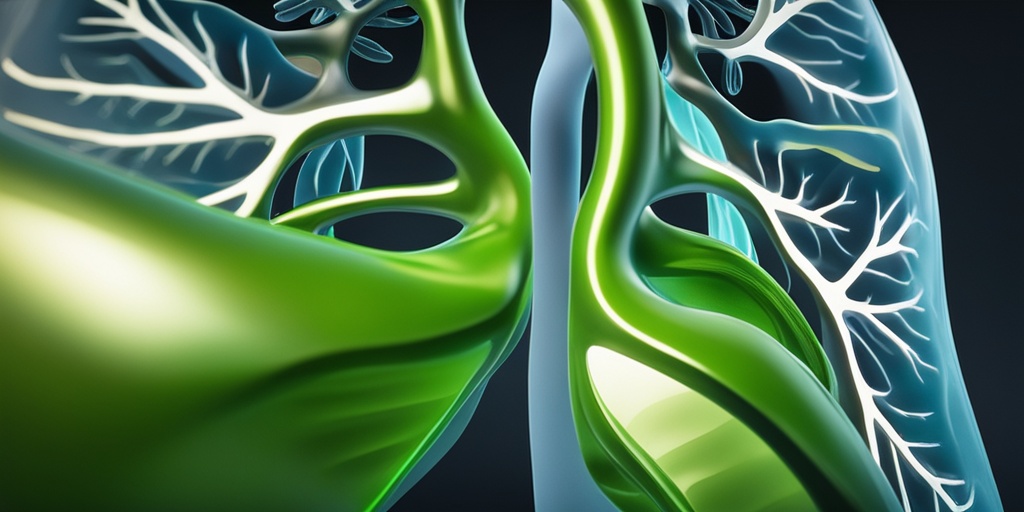What is Pump Lung?
Have you ever wondered how your body manages to pump blood throughout your entire system? It’s a complex process that involves the coordination of multiple organs, including the heart and lungs. In this article, we’ll delve into the concept of “pump lung” and explore its significance in maintaining overall health.
The Connection Between Lungs and Heart
The term “pump lung” might seem unfamiliar, but it’s actually a crucial aspect of our cardiovascular system. In simple terms, the pump lung refers to the lungs’ ability to pump blood to the heart, which then pumps it to the rest of the body. This process is essential for delivering oxygen and nutrients to our cells and organs.
The lungs and heart work together in harmony to facilitate this process. When we inhale, oxygen-rich air enters our lungs, and the oxygen is then transferred to the bloodstream. The heart, acting as a pump, receives this oxygen-rich blood and pumps it to the rest of the body. Simultaneously, the heart also pumps deoxygenated blood back to the lungs, where it’s replenished with oxygen and the cycle repeats.
Pump Lung Syndrome: A Rare but Serious Condition
While the pump lung function is essential for our survival, there’s a rare condition known as pump lung syndrome that can occur when this process is disrupted. Pump lung syndrome, also referred to as “pump lung disease,” is a condition where the lungs become overworked and inflamed due to excessive pressure from the heart.
This condition can be caused by various factors, including heart failure, cardiomyopathy, or pulmonary embolism. If left untreated, pump lung syndrome can lead to serious complications, such as respiratory failure, cardiac arrest, or even death.
Importance of Pump Lung Function
The pump lung function is vital for maintaining overall health and well-being. Here are some reasons why it’s essential to prioritize this function:
Oxygenation and Nutrient Delivery
The pump lung function ensures that our cells and organs receive the necessary oxygen and nutrients to function properly. Without this function, our bodies would rapidly deteriorate, leading to fatigue, weakness, and organ failure.
Cardiovascular Health
A healthy pump lung function is crucial for maintaining cardiovascular health. When the lungs and heart work together efficiently, it reduces the risk of heart disease, high blood pressure, and stroke.
Exercise and Physical Performance
A well-functioning pump lung system is essential for athletes and individuals who engage in regular physical activity. It enables them to perform at their best, as their bodies can efficiently deliver oxygen and nutrients to their muscles.
In conclusion, the pump lung function is a vital aspect of our overall health. By understanding its importance and taking steps to maintain a healthy cardiovascular system, we can reduce the risk of pump lung syndrome and other related conditions. If you have any concerns about your heart or lung health, consult with a healthcare professional or visit Yesil Health AI for evidence-based health answers.
Remember, a healthy pump lung function is essential for living a happy, active, and healthy life! 🏋️♀️💖

How to Improve Pump Lung Function
When it comes to maintaining a healthy body, our lungs play a crucial role in providing oxygen to our cells and organs. The term “pump lung” might be unfamiliar to some, but it refers to the vital function of our lungs in pumping blood throughout our body. In this article, we’ll explore how to improve pump lung function to keep your respiratory system running smoothly.
The Importance of Pump Lung Function
Our lungs are responsible for exchanging oxygen and carbon dioxide through the process of respiration. The pump lung function refers to the contraction and relaxation of the diaphragm, which helps to expand and deflate the lungs, allowing air to enter and exit. This process is essential for pumping blood throughout the body, supplying oxygen to our organs and tissues.
Lifestyle Changes to Boost Pump Lung Function
Fortunately, improving pump lung function can be achieved through a combination of lifestyle changes and targeted exercises. Here are some tips to get you started:
- Aerobic Exercise**: Engage in regular aerobic exercises like walking, jogging, cycling, or swimming for at least 30 minutes a day. This will help strengthen your lungs and improve cardiovascular health.
- Diaphragmatic Breathing**: Practice deep, diaphragmatic breathing exercises to strengthen your diaphragm and increase lung capacity. Lie on your back, place one hand on your stomach and the other on your chest. Inhale deeply through your nose, allowing your stomach to rise as your diaphragm descends. Exhale slowly through your mouth, allowing your stomach to fall as your diaphragm rises.
- Stress Reduction**: High levels of stress can weaken lung function. Engage in stress-reducing activities like meditation, yoga, or reading to help manage stress and promote relaxation.
Nutrition and Supplements for Healthy Lungs
A well-balanced diet rich in fruits, vegetables, and whole grains can help support lung health. Additionally, consider incorporating these supplements into your daily routine:
- Vitamin C**: This antioxidant helps to protect the lungs from damage caused by free radicals.
Pump Lung Exercises for Healthy Lungs
In addition to lifestyle changes and nutrition, targeted exercises can help to improve pump lung function. Here are some exercises to incorporate into your daily routine:
Pursed-Lip Breathing
This exercise helps to strengthen the diaphragm and improve lung function:
- Sit comfortably with your back straight and shoulders relaxed.
- Inhale slowly through your nose for a count of four.
- Purse your lips as if you’re about to blow out a candle.
- Exhale slowly through your pursed lips for a count of four.
- Repeat for 10-15 minutes, 2-3 times a day.
Box Breathing
This exercise helps to relax the diaphragm and promote deep, diaphragmatic breathing:
- Sit comfortably with your back straight and shoulders relaxed.
- Inhale for a count of four, filling your lungs completely.
- Hold your breath for a count of four.
- Exhale for a count of four, allowing your lungs to fully deflate.
- Hold your breath again for a count of four.
- Repeat for 10-15 minutes, 2-3 times a day.
By incorporating these lifestyle changes, nutrition, and exercises into your daily routine, you can improve your pump lung function and promote overall lung health 😊. Remember to consult with your healthcare professional before starting any new exercise or supplement regimen.
♂️

Benefits of Pump Lung Function for Athletes
As an athlete, you know that every advantage counts when it comes to performance. One often overlooked aspect of athletic performance is the importance of pump lung function. But what exactly is pump lung function, and how can it benefit athletes?
What is Pump Lung Function?
Pump lung function refers to the ability of the lungs to efficiently pump oxygen-rich blood to the heart, which then distributes it to the rest of the body. This process is crucial for athletes, as it directly affects their endurance, stamina, and overall performance.
Increased Endurance
One of the most significant benefits of pump lung function for athletes is increased endurance. When the lungs can efficiently pump oxygen-rich blood to the heart, athletes can perform at a higher intensity for longer periods. This means they can push themselves harder and longer during training and competition, giving them a competitive edge.
Improved Oxygenation
Pump lung function also ensures that the body’s tissues and muscles receive the oxygen they need to function optimally. This is especially important for athletes, as oxygen is essential for energy production and muscle contraction. With improved oxygenation, athletes can experience faster recovery times, reduced fatigue, and enhanced overall performance.
Enhanced Cardiovascular Health
Strong pump lung function is also linked to improved cardiovascular health. When the lungs and heart work together efficiently, the cardiovascular system as a whole becomes more resilient and adaptable. This can lead to lower blood pressure, improved circulation, and a reduced risk of cardiovascular disease.
Better Performance Under Pressure
Athletes often perform under high-pressure situations, and pump lung function can help them stay focused and composed. When the body is well-oxygenated, the brain functions more efficiently, leading to improved concentration, decision-making, and reaction time.
Pump Lung and Respiratory Health
While pump lung function is essential for athletes, it’s also critical for overall respiratory health. The lungs play a vital role in removing toxins and waste products from the body, and any impairment in pump lung function can lead to respiratory issues.
The Impact of Poor Pump Lung Function
Poor pump lung function can lead to a range of respiratory problems, including shortness of breath, fatigue, and decreased exercise tolerance. In severe cases, it can even contribute to conditions like chronic obstructive pulmonary disease (COPD) and pulmonary hypertension.
Ways to Improve Pump Lung Function
Fortunately, there are several ways to improve pump lung function and promote respiratory health. These include:
- Cardiovascular exercise: Regular cardio exercises like running, cycling, and swimming can help strengthen the heart and lungs, improving pump lung function.
- Strength training: Building strong muscles, particularly in the chest and back, can help improve lung function and overall respiratory health.
- Proper breathing techniques: Practicing deep, diaphragmatic breathing can help improve lung function and increase oxygenation.
- Avoiding pollutants: Avoiding exposure to air pollutants, such as those found in tobacco smoke and industrial emissions, can help protect the lungs and promote healthy pump lung function.
By prioritizing pump lung function and respiratory health, athletes can unlock their full potential and achieve peak performance. Remember, a healthy pump lung function is essential for optimal athletic performance and overall well-being! 🏋️♀️💪

Common Problems with Pump Lung Function
When we think of our lungs, we often associate them with breathing in oxygen and exhaling carbon dioxide. However, our lungs play a crucial role in another vital function – pumping blood throughout our body. The term “pump lung” refers to the lungs’ ability to pump blood from the heart to the rest of the body. While it may seem like a simple process, there are several common problems that can affect pump lung function.
Reduced Lung Capacity
One of the most common issues affecting pump lung function is reduced lung capacity. This can be caused by various factors such as chronic obstructive pulmonary disease (COPD), pneumonia, or even smoking. When the lungs are unable to expand fully, they struggle to pump blood efficiently, leading to shortness of breath, fatigue, and even heart problems.
Increased Blood Pressure
High blood pressure can put a strain on the lungs, making it harder for them to pump blood. This can lead to a condition known as pulmonary hypertension, which can cause symptoms such as chest pain, dizziness, and swelling in the legs and ankles.
Heart Conditions
Heart conditions such as heart failure, cardiomyopathy, or congenital heart defects can also affect pump lung function. When the heart is unable to pump blood efficiently, the lungs have to work harder to compensate, leading to fatigue, shortness of breath, and even respiratory failure.
Lung Damage
Lung damage caused by injuries, infections, or diseases such as cystic fibrosis can also impact pump lung function. Scarring or inflammation in the lungs can reduce their ability to expand and pump blood, leading to respiratory problems and even heart failure.
Diagnosing Pump Lung Function Disorders
Diagnosing pump lung function disorders can be a complex process, as the symptoms can be similar to those of other conditions. However, with the right tests and examinations, healthcare professionals can identify the underlying cause of the problem.
Physical Examination
A physical examination is usually the first step in diagnosing pump lung function disorders. Healthcare professionals will listen to the lungs with a stethoscope to check for any abnormal sounds, and may also perform a chest X-ray to rule out any lung damage or disease.
Imaging Tests
Imaging tests such as echocardiograms, CT scans, or MRI scans can help healthcare professionals visualize the heart and lungs to identify any structural problems or damage. These tests can also help measure the lungs’ ability to pump blood and oxygen.
Cardiac Catheterization
In some cases, cardiac catheterization may be necessary to diagnose pump lung function disorders. This involves inserting a thin tube into an artery in the leg or arm and guiding it to the heart to measure blood pressure and flow.
Pulmonary Function Tests
Pulmonary function tests (PFTs) can help measure lung function and identify any problems with oxygen exchange. These tests can include spirometry, which measures lung capacity, and diffusion capacity, which measures the lungs’ ability to transfer oxygen into the blood.
By understanding the common problems that can affect pump lung function and the diagnostic tests used to identify them, we can take steps to maintain healthy lungs and prevent these disorders. Remember, a healthy pump lung is essential for a healthy heart and overall well-being! ❤️

Frequently Asked Questions about Pump Lung
What is Pump Lung Syndrome?
Pump lung syndrome, also known as pump lung disease, is a rare but serious condition that occurs when air enters the bloodstream through the lungs, causing damage to the lungs and other organs. It is often associated with scuba diving, but can also occur in other situations where there is a sudden change in air pressure.
What are the Symptoms of Pump Lung Syndrome?
The symptoms of pump lung syndrome can vary depending on the severity of the condition, but may include:
- Shortness of breath or difficulty breathing
- Chest pain or discomfort
- Fatigue or weakness
- Confusion or disorientation
- Numbness or tingling in the extremities
How is Pump Lung Syndrome Diagnosed?
Pump lung syndrome is typically diagnosed through a combination of physical examination, medical history, and diagnostic tests such as:
- Chest X-ray
- Computed Tomography (CT) scan
- Magnetic Resonance Imaging (MRI)
- Blood tests to check for oxygen levels and other indicators of lung function
How is Pump Lung Syndrome Treated?
Treatment for pump lung syndrome typically involves supportive care to manage symptoms and prevent further complications. This may include:
- Oxygen therapy to increase oxygen levels in the blood
- Medications to manage pain and reduce inflammation
- Rest and relaxation to reduce stress on the lungs
- In severe cases, hospitalization may be necessary to provide close monitoring and treatment
What is a Pump-Lung Device?
A pump-lung device, also known as an extracorporeal membrane oxygenation (ECMO) machine, is a device that takes over the work of the lungs, pumping oxygen-rich blood throughout the body. It is often used in critical care settings to support patients with severe lung failure or other life-threatening conditions.
How Do Lungs Pump Blood?
The lungs do not actually pump blood, but rather, they facilitate the exchange of oxygen and carbon dioxide through the process of respiration. The heart pumps blood throughout the body, including to the lungs, where oxygen is absorbed and carbon dioxide is removed.
What is the Function of the Pump Lung?
The pump lung, or lungs, play a crucial role in the exchange of oxygen and carbon dioxide through the process of respiration. They also help to filter the blood, regulate pH levels, and maintain overall health.
I hope this FAQ section helps to address some of the most common questions and concerns related to pump lung syndrome and related topics! 🏥💡




